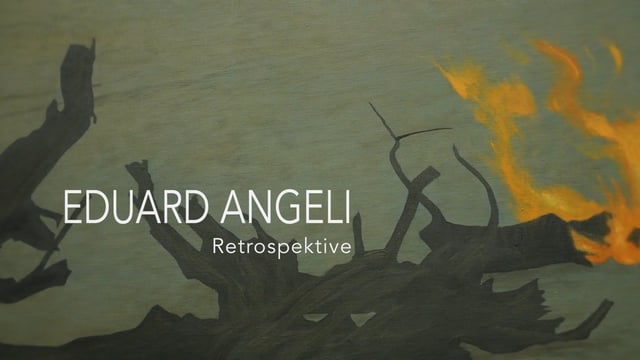Chagall to Malevich - The Russian Avant-Gardes
Klaus Albrecht Schröder, Albertina museum director and curator of the exhibition "Chagall to Malevich - The Russian Avant-Gardes" leads us through the developments of the Russian avant-gardes.
Chagall to Malevich takes us back to a dramatic era of Russian art history and its enormous variety of competing avant-gardes and different movements. Focusing on painting, the Albertina exhibition shows the development of Primitivism, Suprematism, Rayonism, Kubofuturism, Constructivism, and also Supranaturalism.
The constellation resulting from the Russian revolution, the following civil war and the European trauma of the First World War favoured the collective rupture with the past, politically as well as aesthetically. The new organisation of society demanded not only a political reset, but also a material one, as the country had to be reconstructed after the conflicts between 1914 and 1920. The poet Andreyi Belyi noted sarcastically, “the victory of materialism in Russia led to the disappearance of all material in the country”.
These influences, the revolution of 1917, Lenin’s death in 1924, or Stalinism are visible in the art of the times, in its contradictions and changes of tendency. Already in the first hall of the show, pairs of pictures by the same artists demonstrate how the political circumstances of Tsarism, revolution and Stalinism led to striking changes of style in the artists’ work.
In many ways the Russian avant-garde believed to have witnessed the end of history and the Death of God, events that seems undoubted, entailing the need for the creation of a new reality and not the mere representation of a reality that had been destroyed completely – a program pursued by Suprematism, with its most eminent protagonist being Casimir Malevich, the inventor of abstract art.
In the Albertina, Malevich’s paintings are displayed in white halls. Malevich, Kandinsky, Chagall, Larionov, Rodchenko and many other key figures whose work is in the exhibition testify to the transformative impulse that was favoured by a political constellation unequaled in Europe.
Nevertheless, there was no private art market in revolutionary Russia. The artists had to compete for government purchases, and politics had an enormous influence on the art of the era. Artistic antagonisms quickly became existential matters in these days of economic scarcity.
When Anatoly Vassilyevich Lunacharski became People’s Commissar for education and head of the ministry of art, he named Marc Chagall, who he had met in exile, as commissar for art in Vitebsk. At the academy of arts in Vitebsk, where Chagall taught and where he had appointed El Lissitzky and Casimir Malevich, his entire painting class changed over to Malevich in 1920, as abstract art was the dogma of the time and figurative painting was deemed reactionary. Disappointed, Chagall left for Moscow and eventually for Paris and later New York, where he continued to work on his colourful tales about the bygone world of the Jewish Shtetls. Contrary to his coevals, Chagall never abandoned figurative painting which he considered realistic and not fantastic. His poetical and nostalgic imagery shows a reality beyond nature whose meaning will only be disclosed to those who are able top decipher it. This meaning is intrinsic to all things, phenomena and events and it is the essential quality of the artist to be able to perceive and uncover this meaning. Only this capacity enables him to arrange images in a harmonic order that would provide a meaning to the scattered fragments of our perception.
In the Albertina, the shining pictures of Marc Chagall are exhibited before a dark blue background, among others the famous Green Violinist, a loan from the Stedelijk Museum Amsterdam. Other loans come from Bern and Basilea although the main lender is the State Russian Museum in St. Petersburg. (written by Cem Angeli)
Das könnte Sie auch interessieren

4shrooms - Analog Synergy in a Digital World
2. April 2008
VON BALLMOOS KRUCKER ARCHITEKTEN. Wiens Städtebau und zeitgenössische Architektur
10. May 2015
EDUARD ANGELI. In the Mirror of Stillness
12. November 2024
JAKOB GASTEIGER. Post radical painting at the Albertina
4. May 2021
PICASSO - GORKY - WARHOL. At Kunsthalle Krems
8. August 2018
Eduard Angeli - Retrospective
21. April 2017
Helmut Grill - From Epicurus to Donald Duck
14. February 2013
